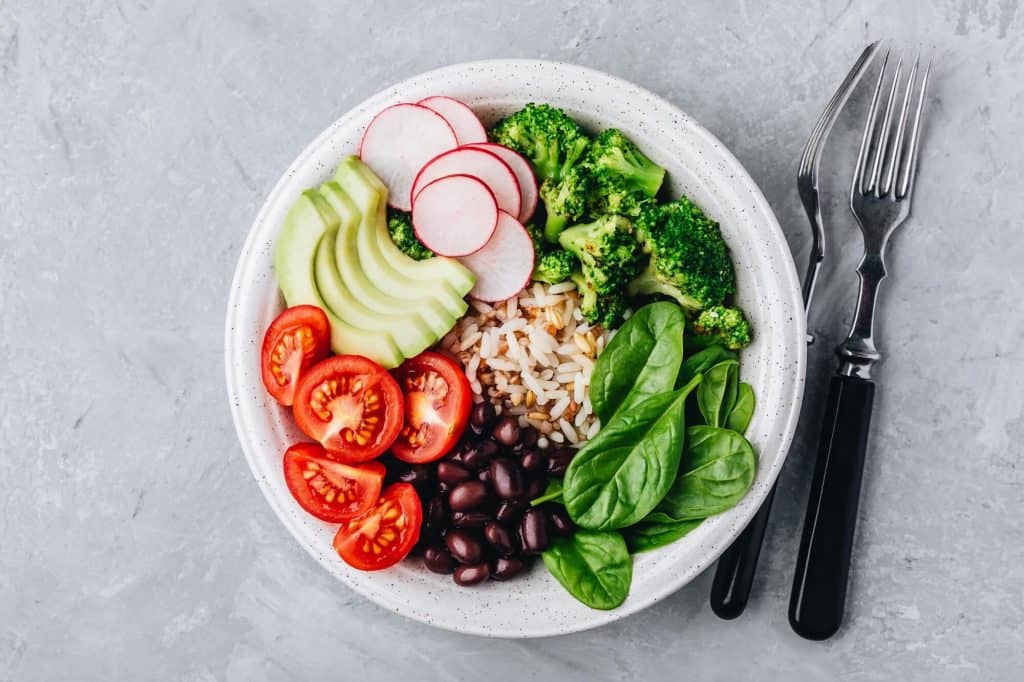Running 20 miles as a form of marathon training will certainly help you be prepared. But How Long Does It Take to Run 20 Miles?
In this guide, we answer questions that most runners are concerned about. For starters, how long does it take to run 20 miles, what diet is best to follow during your training, and how to pace yourself for such a long run.
All that and more you’ll find below, so let’s get to it!
How Long Does It Take to Run 20 Miles?
Putting it in short terms, runners find that running 20 miles will mostly depend on their pace, athleticism, stamina, and how long they’ve been training to reach that goal.
So, in other words, if you want to know how long it’ll take you to run 20 miles, you first need to learn about the factors above. Once you determine what your pace is and stick to a schedule that’ll focus on resistance training, you can know for sure.
As a rule of thumb, you shouldn’t keep running once you hit the three-hour mark—regardless of how many miles you’ve covered. Physically, your body doesn’t reap any more benefits after three hours of running. Instead, you’ll be increasing the risk of injuring yourself.
Another important tip to remember is that a runner who wants to hit the 20-mile line or plans to run the marathon needs to keep a steady pace of nine minutes per mile. If your pace is higher, we don’t recommend taking on such long runs.
This goes back to the fact that runners with a nine-minute pace will be able to finish a 20-mile run in three hours; no problem. On the other hand, fast, experienced runners with a seven or eight-minute pace will end the same race in around two and half hours—if not less.
How Much Should I Train to Run 20 Miles?
Looking at the bright side, there are multiple training programs you can currently choose from. The golden rule here is to pick one that works best for you and your fitness goals.
The most popular example many runners are following nowadays is the Hansons Marathon Method. This training program is primarily based on two factors: your weekly total mileage and your running pace.
Hanson’s main pillar is to not let the runner’s long run exceed 25% or 30% of their overall mileage. This may lead to a 16 miler to be the furthest you go in your training.
Why is this tactical rule important, you ask? It’s because going against it will only create more problems. You’ll be at high risk of injury, overtraining, depleted levels of muscle glycogen, and below-average workouts.
So, for instance, if your weekly mileage is about 40 miles, your training will include running from ten to 12 miles. On the other hand, if you want to start on your 20 miles, then you should be running at least 70 miles a week.
This way you can ensure enough time for your muscles to rest. Since a marathon or a 20-mile training takes a toll on one’s body, it’s healthy to not push your limits until you fully learn what they are.
How to Easily Run 20 Miles

No training program is ever designed to make you jump into a 20-mile run right off the bat. In fact, most schedules implement repetitive short-distance runs that increase by a minimum of 10% each week.
This is how much athletic training begins. It’s how trainees can maintain fitness gains without doubling their chances of injury. By adding just enough stress to your muscles over time, you’re readying your body physically for any long run.
Additionally, you’re also activating your aerobic metabolic system which helps you easily break down carbohydrates and glucose. With low-intensity workouts, such as running, you need a highly-functioning aerobic system to help you become a fast runner.
With the above facts in mind, in this section, we take you through a couple of our favorite tips on how to easily run 20 miles!
Journey over Numbers
A mistake most new runners fall into is focusing on their speed and mileage instead of being patient with themselves and trusting the process. You might have heard this advice a lot, but that’s only since it rings true!
To put it simply, you should prioritize finishing the required distance first before worrying over how you complete it or how much time it took you.
Learn as You Run
A 20-mile race is no easy feat. Building up for it takes not only months of training, but it also requires taking note of everything that happens to your body while you run. Remember: long-distance tracks need a runner that’s strong both physically and mentally.
In other words, you need to plan your run so that you have enough time for a pre-race breakfast, muscle stretches, and bathroom stops. Picking the right shoes and kind of water bottle will help too.
Be Your Own Cheerleader
While the marathon run is typically packed with enthused bystanders, their encouraging shouts often turn from a needed distraction to a burden—especially during the last few miles. This is why it’s better to have your own mantra that’ll keep you going when the run gets tough.
When you use this habit during practice, it’ll stick with you. Gradually, your brain will get accustomed to it and eventually make it easier for you to finish that 20-mile run and be mentally prepared for the marathon.
How You Should Prepare for a 20-Mile Run
Preparing for a 20-mile run lies in weighing the benefits against the risks where the latter should never take front center.
For example, a great training program includes running short races for two to four days a week while carrying out eight to 12 hours of resistance workouts as well. Longer training runs may build up endurance but they require a long recovery period that may last weeks.
The following factors are necessary for you to keep in mind: overall high mileage, back-to-back runs, long marathon-paced workouts, and cumulative fatigue. Learning and knowing about such things play a role in how quickly you’ll be preparing for your 20-mile run.
If you think that only your legs and lungs will carry you through a long race, you’re mistaken. Your mind, stomach, and feet should also be considered. They’re what will carry you through the last six miles of a marathon.
This is where practicing comes to help. With time, you’ll be building calluses on your feet that prevent them from blistering too fast on long runs. Additionally, you get to learn where you chafe most so you can use the right ointment to avoid it from happening.
It’s just as essential to know how to hydrate before, during, and after your long run. Energy snacks, enough sleep, along with an ideal tapering regime allow your body to rest, recover, and build up extra energy for your marathon or your 20-mile run.
What Should You Eat after a 20-Mile Run?

What you eat after any run depends on the goal you’re running for. For instance, if your target is weight loss, your diet will be tailored to what your body needs. Marathon training, on the other hand, requires more protein and vitamin-packed food.
With that said, a 20-mile run burns almost 2,000 calories—the needed amount of calories in a day! To put it simply, you lose a lot of nutrients, vitamins, and essential carbs, all of which you should work to compensate for after you’re done with your race.
Here’s a shortlist of certain foods and snacks that are best to eat after a 20-mile run:
- A burrito bowl with either brown or white rice. This is a great way to replenish reduced energy and protein levels after a long race.
- Pasta with chicken and broccoli. Such a hearty meal is packed with carbs, proteins, and healthy minerals.
- Rice plus asparagus and salmon. This dish is full of omega-3 fatty acids, anti-inflammatory properties, and lots of protein.
- An oatmeal bowl full of fruits and nuts. Adding honey or chocolate chips is optional but overall, it’s an ideal snack that’ll sustain your health after running 20 miles.
What Should You Eat before a 20-Mile Run?
Once you’ve got your running pace up, you’re closer to hitting 20 miles than you think. The only other thing you should keep in mind is what your diet is going to look like a week before your big race.
Eating well will not only help you store energy beforehand, but it’ll also protect your sensitive stomach from all the pumping you’ll be putting it through. The last thing you want is to upset it or induce a stomachache mid-run.
The list below will take you through a few diet plans to consider:
- Carbo-loading fills the body with essential carbohydrates. Just remember to have 65-70% of your calorie intake come in the form of carbs.
- Protein-rich meals increase the absorption of glycogen which greatly helps with building muscles and storing energy when running.
- Balance your electrolytes by drinking enough fluids. It’ll also help you easily store glycogen. Stay away from dehydrating drinks, such as coffee, tea, and alcohol.
- Take a snack loaded with carbohydrates and accounts for around 300 calories right before your run. Depending on your metabolism, you may need a stronger meal.
In the end, the golden rule to keep in mind is to drink a cup of water (from 800 to 1,000 ml) every hour. If the weather is too hot, double the amount.
During your run, ingest power bars every 30 minutes or so, and make sure to take them with water to aid in their absorption. If the snack’s concentration rate is higher than 8%, you may need more water to help you fully benefit from it.

Final Words On How Long Does It Take to Run 20 Miles
A few of the questions we answered in this guide were how long does it take to run 20 miles and how do you thoroughly prepare for such a long run?
The time it takes for you to finish a 20-mile run comes down to two things: your average running pace and your total weekly mileage. With a minimum nine-minute per mile pace plus a 70-mile-a-week mileage, you’re halfway ready to complete a 20-mile race.
The other half will include eating and hydrating well enough for the long run. Mental preparation is another essential part of training since you’ll be putting your mind through a lot of stress.
Happy running!

